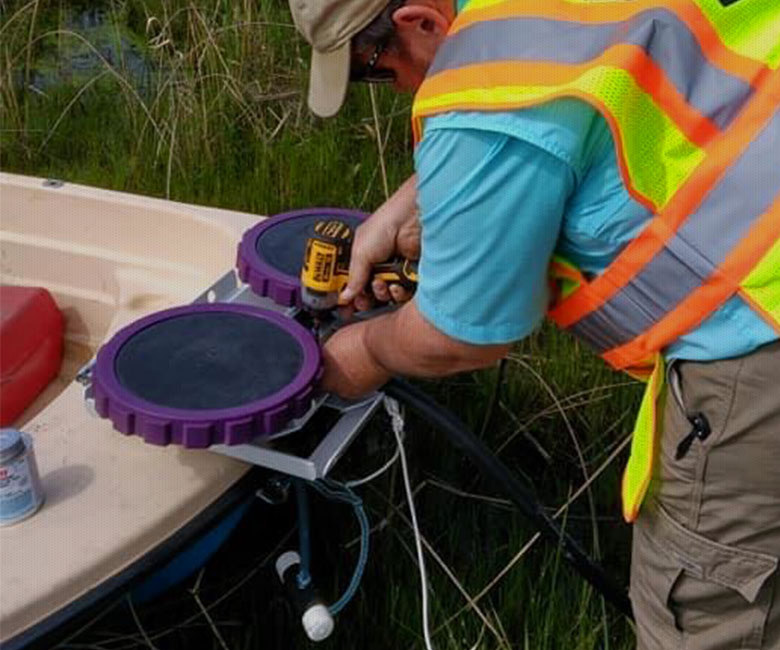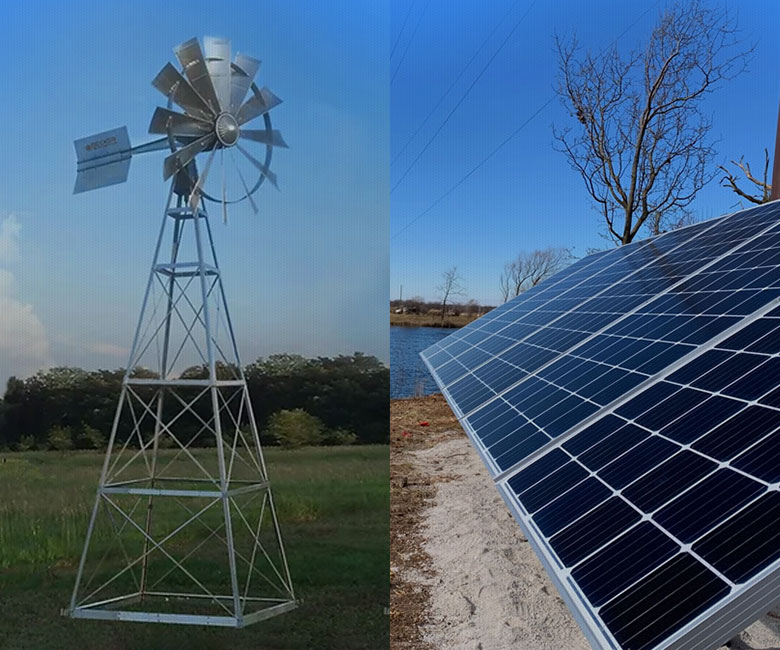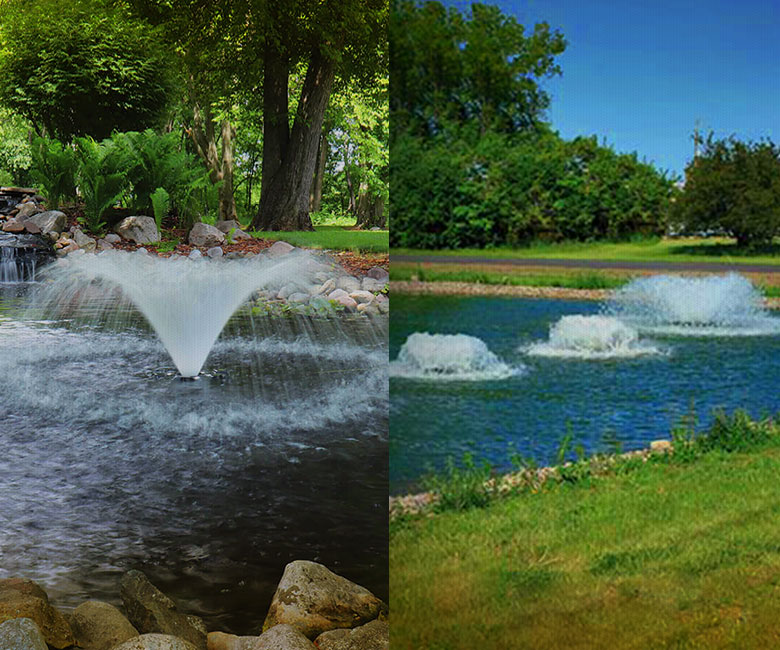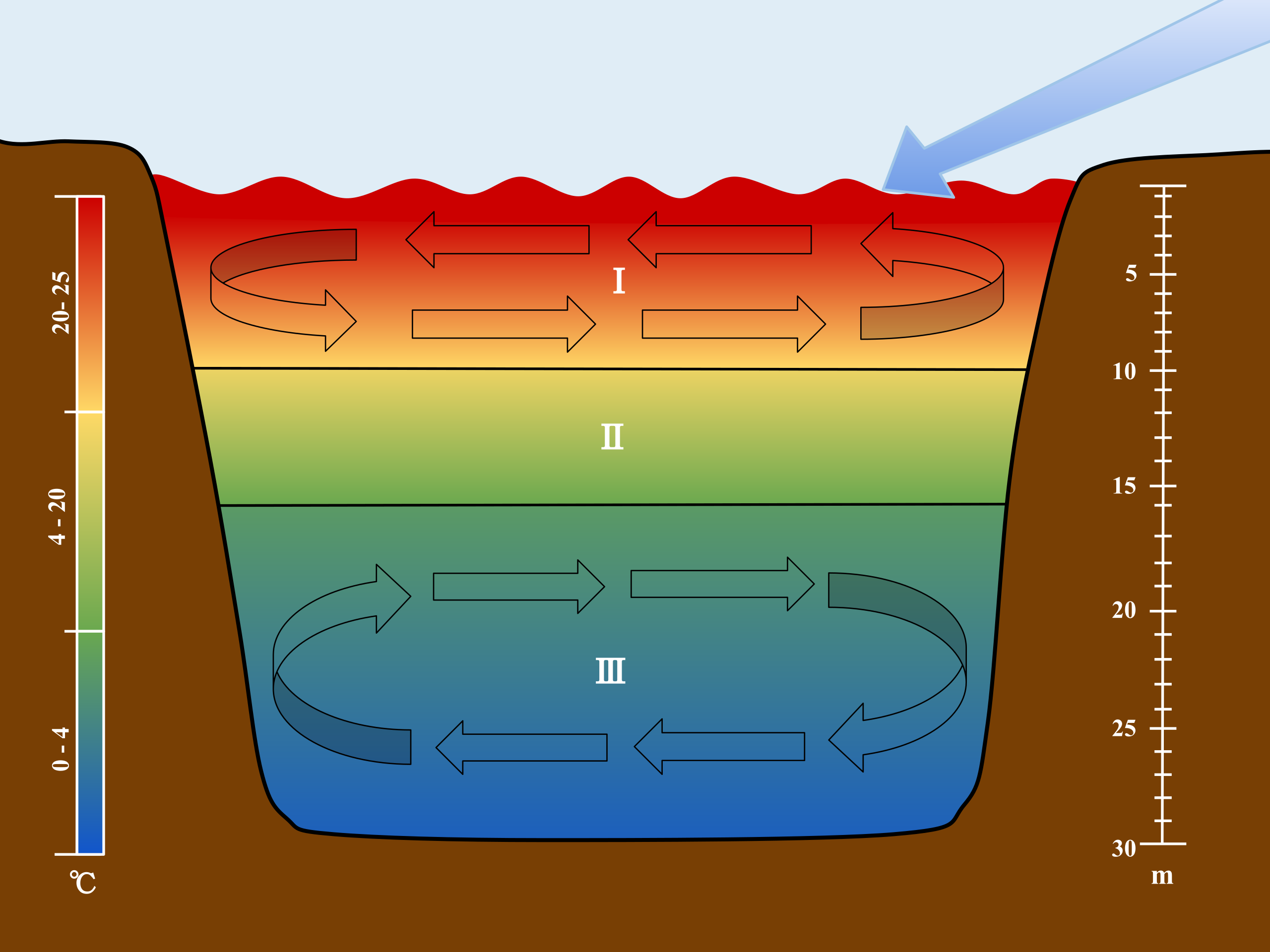Pond Aeration
A Guide to Lake & Pond Water Quality
POND AERATION
Systems & Kits

Basic & Deluxe Aeration Kits
Basic aeration kits provide all the necessary components to aerate a pond. A compressor, tubing, diffuser(s) and fittings are sized to work together for a working aeration system in these basic kits. These kits will require additional weather protection for the compressor, but the kit, as a whole, provides a complete system.
Deluxe aeration kits provide all the components of the basic kits and include the mounting of the compressor in a deluxe cabinet. These aeration systems are designed for convenience and reliability.
Windmills & Solar Systems
Windmills and Solar systems are both beneficial when there is no access to electricity. Windmills can effectively aerate ponds while saving money on electric costs, paying for themselves within a few short years. The battery-free solar systems eliminate the expense of rechargeable batteries and controllers, making them more affordable. There are a variety of systems to choose from to meet your needs.


Fountains & Surface Aerators
Fountains are a popular choice when decorative looks are desired. Many different spray patterns are available, creating aesthetically pleasing looks while creating circulation and aeration. They can also operate in shallow water. While bottom diffuser aeration requires at least 5 feet of depth to be effective, fountains can operate with at least 30 inches of water depth. However, since they draw water from the area close to the fountain, they cannot destratify to any significant depths.
Surface aerators are the answer for shallow water depths like those found in retention ponds. Depending on the model they can move and aerate a lot of water. Many needing only a minimum operating depth of 15 to 26 inches.
POND BENEFITS
Oxygen & Bacteria
The engine that drives everything within a body of water is the presence of oxygen and beneficial bacteria in proper levels.
A pond's condition deteriorates when its bottom environment cannot support aquatic life. The bottom is where the most oxygen is consumed and the farthest from the surface where it is replenished.
Without adequate oxygen at the bottom, beneficial bacteria's ability to break down the organic waste is greatly reduced.
This results in increased layers of sediment (muck) along the pond bottom. This increase in nutrients promotes algae and poor water quality. Simply put, without oxygen a pond cannot clean itself!

Epilimnion Zone
The water is typically oxygen rich. Waves and splashing of the surface water act to replenish the oxygen. This area may have recurrent surface scum and/or floating weed masses.
Metalimnion Zone
There is a decrease in temperature and dissolved oxygen.
Hypolimnion Zone
Can be completely void of oxygen - the water temperature is cold -weeds that can thrive in this environment multiply, and it can be unusable by fish and all aerobic organisms.
Bottom diffused aeration provides a hydraulic lifting action that mixes the water throughout the water column. This provides uniform temperatures and oxygen levels.